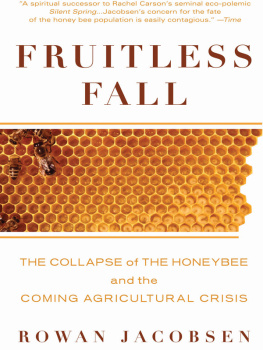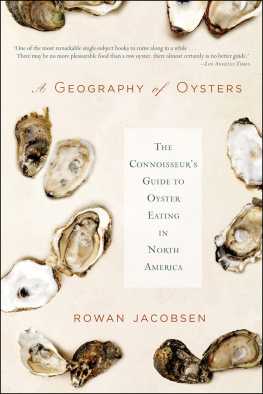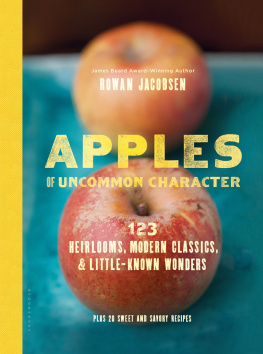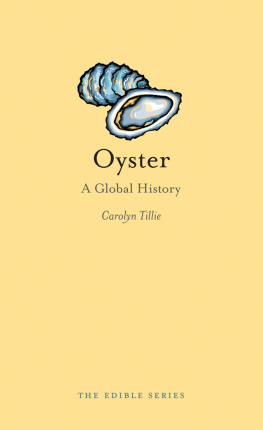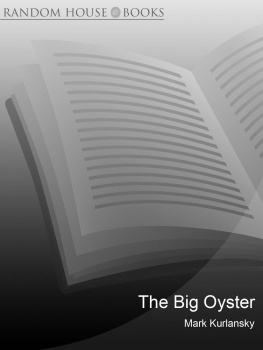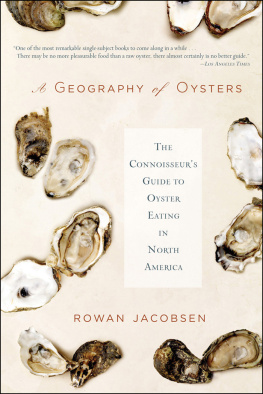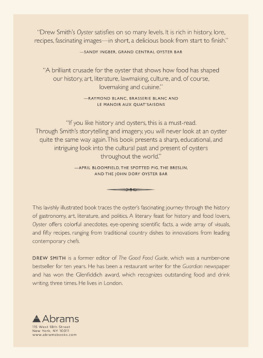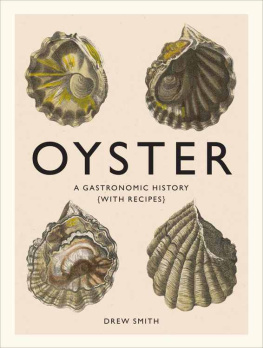
BLOOMSBURY USA
AN IMPRINT OF BLOOMSBURY PUBLISHING PLC
1385 BROADWAY | 50 BEDFORD SQUARE |
NEW YORK | LONDON |
NY 10018 | WC1B 3DP |
USA | UK |
WWW.BLOOMSBURY.COM
BLOOMSBURY AND THE DIANA LOGO ARE TRADEMARKS OF BLOOMSBURY PUBLISHING PLC
FIRST PUBLISHED 2016
COPYRIGHT ROWAN JACOBSEN 2016
PHOTOGRAPHS DAVID MALOSH 2016
THIS ELECTRONIC EDITION PUBLISHED IN 2016 BY BLOOMSBURY PUBLISHING PLC
BLOOMSBURY IS A REGISTERED TRADEMARK OF BLOOMSBURY PUBLISHING PLC
THIS BE THE OYSTER FIRST APPEARED IN THE GREENSBORO REVIEW, COPYRIGHT MARY JACOBSEN 2016
ALL RIGHTS RESERVED
YOU MAY NOT COPY, DISTRIBUTE, TRANSMIT, REPRODUCE OR OTHERWISE MAKE AVAILABLE THIS PUBLICATION (OR ANY PART OF IT) IN ANY FORM, OR BY ANY MEANS (INCLUDING WITHOUT LIMITATION ELECTRONIC, DIGITAL, OPTICAL, MECHANICAL, PHOTOCOPYING, PRINTING, RECORDING OR OTHERWISE), WITHOUT THE PRIOR WRITTEN PERMISSION OF THE PUBLISHER. ANY PERSON WHO DOES ANY UNAUTHORISED ACT IN RELATION TO THIS PUBLICATION MAY BE LIABLE TO CRIMINAL PROSECUTION AND CIVIL CLAIMS FOR DAMAGES.
NO RESPONSIBILITY FOR LOSS CAUSED TO ANY INDIVIDUAL OR ORGANIZATIONACTING ON OR REFRAINING FROM ACTION AS A RESULT OF THE MATERIAL IN THIS PUBLICATION CAN BE ACCEPTED BY BLOOMSBURY OR THE AUTHOR.
ISBN: 978-1-63286-256-3 (HB)
ISBN: 978-1-63286-257-0 (eBook)
ISBN: 978-1-63286-256-3 (ePDF)
LIBRARY OF CONGRESS CATALOGING-IN-PUBLICATION DATA HAS BEEN APPLIED FOR.
TO FIND OUT MORE ABOUT OUR AUTHORS AND THEIR BOOKS PLEASE VISIT WWW.BLOOMSBURY.COM WHERE YOU WILL FIND EXTRACTS, AUTHOR INTERVIEWS AND DETAILS OF FORTHCOMING EVENTS, AND TO BE THE FIRST TO HEAR ABOUT LATEST RELEASES AND SPECIAL OFFERS, SIGN UP FOR OUR NEWSLETTERS.
BLOOMSBURY BOOKS MAY BE PURCHASED FOR BUSINESS OR PROMOTIONAL USE. FOR INFORMATION ON BULK PURCHASES PLEASE CONTACT MACMILLAN CORPORATE AND PREMIUM SALES DEPARTMENT AT .
THIS BE THE OYSTER
This be the cup, brimming fathoms of nectar
This, the well that flows from forever
This be the saltcellar, trencher of tears
and also the teardrop, stone-wept from ocean
This be the stone, lost among cairns,
and there, another, hidden in middens
This be the hull that casts off its seed
Thus grows the reef, encrusted with life
This, ancient vessel, anchored to reef
This be the ark where life resides
and this, tiny cradle, bearer of treasure
This be the oyster, slow-rocked by tides.
Mary Elder Jacobsen
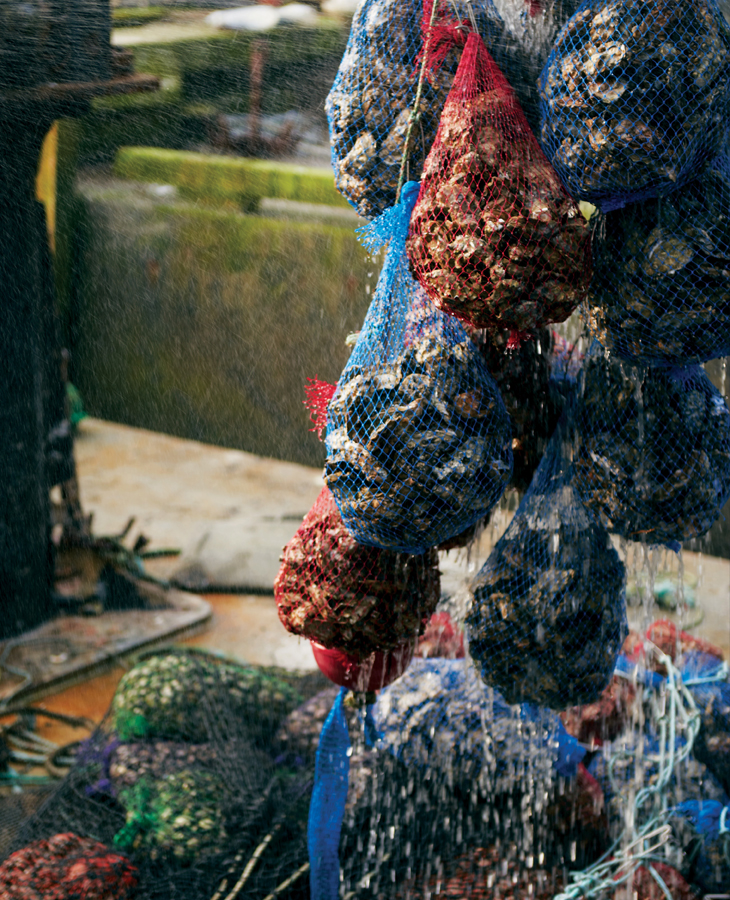

INTRODUCTION
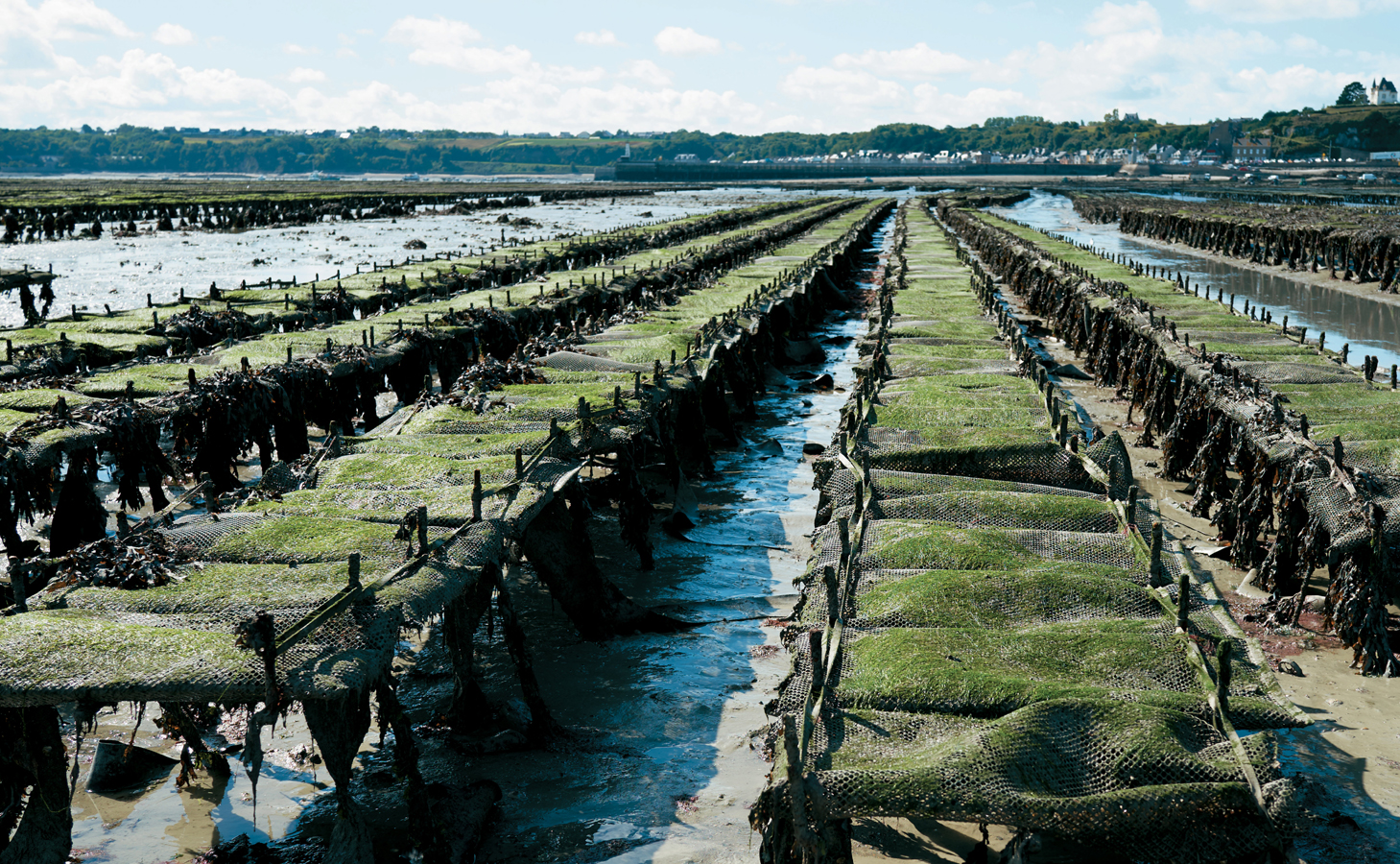
A good oyster smells like the sea breeze skipping over the shore. A bad oyster smells like a murder victim. I prefer the former. But I like how even the latter helps exemplify the essence of the interface: An oyster conveys its life experience directly to your senses.
Was it raised in the briny Atlantic or a brackish bayou? Warm water or cold? Rich or thin? Did it develop down in the pluff mud of the Carolina Lowcountry, or in a floating bag tossed by wind and waves in Willapa Bay? Did its ancestors hail from Japan or the James River? The whole story is there in front of you. You can read some of that story with your eyes, but to really understand, of course, you have to eat it. And when you do, even if you arent yet familiar with the language of oysters, you can usually get the essence right away. Every oyster is a tide pool in miniature, a poem built of salt water and phytoplankton that nods to whatever motes of meaning shaped it. It is the sea made solid. The bay gone sentient.
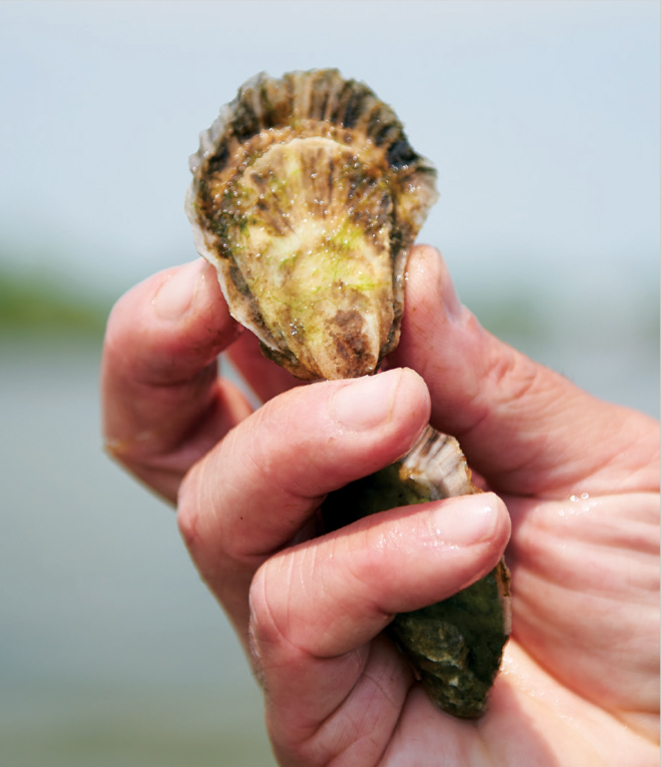
Not that solid. And not that sentient. An oyster is basically seawater with a purpose. It threatens to collapse back into sea-ness at any moment, the way an emulsion looks for an excuse to give up. This in-betweenness, neither solid nor liquid, can be the oysters unique allure or its primary offense, depending on the audience. Assuming that you are in the first campand if not, gentle reader, you have made a terrible mistakethen you already know that an oysters charm lies in straddling realms, in being animal, vegetable, and mineral all at once. Its also wicked salty and goes great with beer. Sometimes I think its that simple.
SACRIFICE, RENEWAL
A decade ago, I wrote a book called A Geography of Oysters that helped accelerate the oyster mania we now find ourselves in. There have always been oyster lovers, of course, and Id been one of them since my teens, but it wasnt until the early aughts that I got a little clarity on why I loved them. It was because they were landscape. Id been drinking a lot of wine and thinking a lot about terroir, the taste of place. I loved the idea that wine nods to the natural conditions where its grapes grew, but I knew it was no more than a nod: Wine doesnt literally taste like its landscape. In terms of terroir, oysters make wine look like Hawaiian Punch. They are their terrain, and their flavors are a pure condensation of the place they grow. Its the salinity and temperature of the water, the particular mix of plankton they graze on, the wildness of the waves, and the essential mojo of the spot. I did my research and put together my book, hoping that there were a few other oyster geeks out there who might be interested. Turns out there were a lot. We all need living landscapes.

Smokey McKeen and Carter Newell sorting Pemaquid oysters dredged from Maines Damariscotta River.
But strip away the veneer of terroir (or merroir, the marine equivalent), and you find something much more primal going on. Like sushi, oysters are best eaten raw, when the living chi has not yet fled. They have a life force in them that leaves you feeling flushed. And you will pay what it takes to get that feeling. Thats why oysters, nutritional nobodies, can cause people to part from their economic senses in a way generally reserved for drugs and sex. I consider them more mood than food. They wont fill you up. But theyll make you feel like the coolest alpha predator in the ecosystem.
The next time youre holding a particularly chi-laden oyster in your hand, sharpen your most prized oyster knife, go in through the oysters bill (the rounded front), and cut the bottom muscle tight against the shell. Turn over the oyster in your hand and remove the bottom shell. Nestled against the white disk of muscle, youll see a pale, pulsing drum. This is the heart. It flutters just like the pulse on your lovers neck. Or on the neck of a bull about to get the axe on the altar of a Greek mystery cult, which is probably more to the point. Oyster culture is one of our last vestiges of live animal sacrifice, a Bronze Age atavism best experienced in places like New Orleans, where the oyster bar still serves as a temple. You walk in and immediately feel the heightened atmosphere. You take your seat with the other supplicants at the marble altar. The high priest greets you; ritual conversation ensues. Then he raises his knife and cuts the muscles of a dozen oysters as you follow his clean, rehearsed motions with your eyes:


